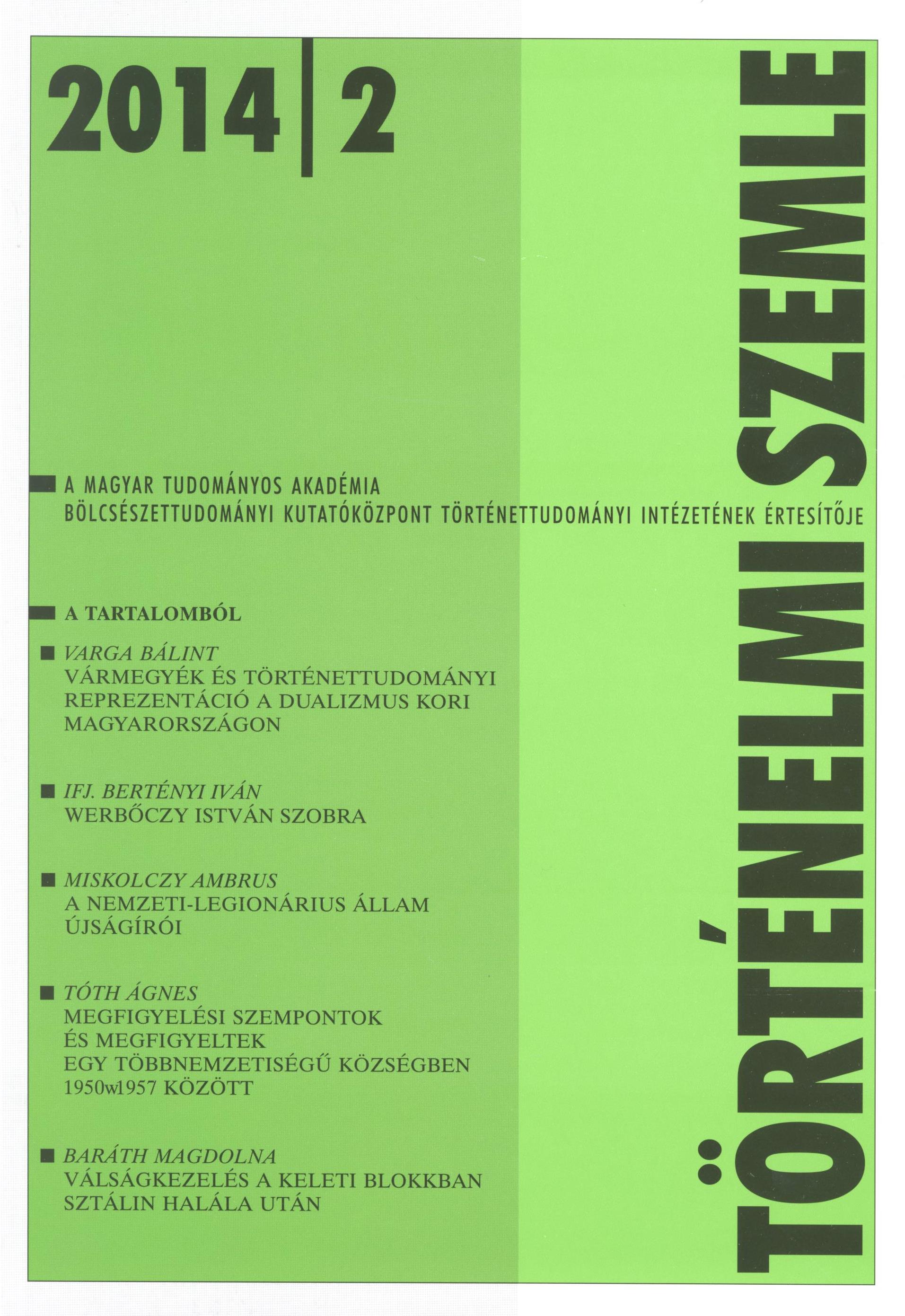Megfi gyelési szempontok és megfi gyeltek egy többnemzetiségű községben - Vaskút, 1950–1957
Aspects of Political Surveillance and its Targets in a Multiethnic Village, Vaskút, 1950–1957
Author(s): Ágnes TóthSubject(s): Political history, Social differentiation, Studies in violence and power, Post-War period (1950 - 1989), Ethnic Minorities Studies
Published by: Magyar Tudományos Akadémia Bölcsészettudományi Kutatóközpont Történettudományi Intézet
Keywords: object-folder; multiethnic village; Vaskút; 1950–1957;
Summary/Abstract: The study analyses on the basis of the so-called „object-folder” of the village called Vaskút (Bács-Kiskun county, Hungary) the basic principles of political surveillance in the village and the Hungarian countryside in general in the early 1950s. As the village itself was of a mixed ethnic character, the analysis focuses on the ethnic features of surveillance and enemy-construction, with a special regard to the local Germans. The author examines the ways in which the aspects of enemy targeting on a class or political basis overlapped with the national question. The study, however, does not deal with shadowers: it leaves out of consideration both the regional and local institutional network and its personnel. Likewise untreated is the network of beagles – confidential informant, agent, social contact – that operated in the village itself. The study comes to the conclusion that in the Rákosi period the mere fact of belonging to an ethnic minority was tantamount in the eyes of the Communist authorities to political untrustworthiness. Nevertheless, the intrinsic „culpability” of such persons was generally underpinned by other stigmata – such as clerical reactionary, right-winger, former member of a fascist party or other organisation, having Western relatives, or maintaining contacts with Yugoslav citizens. This procedure served on the one hand to conceal the national bias, and on the other hand it increased the weight of crime. At the same time, it was also suitable for undermining the ethnic cohesion of the community in case. The argumentation of stigmatization and discrimination was in a constant state of flux, the various aspects confounded or separated again as the need arose. As a result, the targeted person became unable to comprehend what he or she was accused of, and consequently also unable to put on any defense. The reigning power applied the means of distress and fear as forces of social organisation. The ultimate aim was to suppress the autonomy of the community and of the person on target.
Journal: Történelmi Szemle
- Issue Year: 2014
- Issue No: 02
- Page Range: 251-268
- Page Count: 18
- Language: Hungarian

